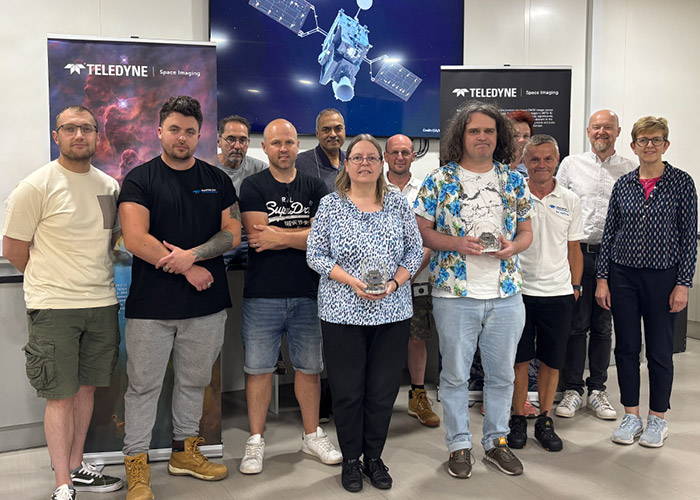Teledyne Space Imaging in Chelmsford, UK, has designed, tested, and manufactured two charge-coupled device (CCD) image sensors which were delivered to Airbus GmbH for the European Space Agency’s (ESA) Sentinel-4 air-quality monitoring mission. Sentinel-4, mounted on the Meteosat Third Generation Sounder (MTG-S) satellite, successfully launched on 1 July from Cape Canaveral in Florida, US, as part of the European Union’s Copernicus programme, led by the European Commission (EC) in partnership with ESA.
This marks the second launch in just one week featuring detector technology from Teledyne Space Imaging. The Japanese Global Observing SATellite for Greenhouse gases and Water cycle (GOSAT-GW) mission, which launched on 28 June 2025, included two CIS120 sensors from Teledyne.
Mission Purpose
Sentinel-4 incorporates two different types of CCD sensors within its Ultraviolet-Visible-Near-Infrared (UVN) imaging spectrometer instrument. The CCD374 sensor operates at ultraviolet and visible wavelengths, while the CCD376 sensor provides images in the near-infrared wavelength. From its geostationary orbit, the Sentinel-4 mission will deliver data on a range of trace gases, including ozone, nitrogen dioxide, and sulphur dioxide.
The Sentinel-4 mission will transmit data on tropospheric constituents over Europe every hour for use in air quality applications and monitoring projects on the ground. This data will provide valuable insights into climate, air pollutants, and ozone/surface ultraviolet (UV) applications, supporting ongoing research into protecting public health.
Project Involvement and Development
Teledyne Space Imaging first became involved in the Sentinel-4 project during its initial development phase in 2009, which included detector design, prototype manufacturing, and radiation testing. The second phase, which began in 2012, involved the design and validation of the flight detectors, as well as design updates based on the results of the first phase. The final phase, completed in 2019, was the flight model phase, during which Teledyne Space Imaging manufactured the flight deliverables for the customer. Reliability testing ensured the detectors will survive beyond the expected 10-year duration of the mission.
Ross Mackie, Principal Project Lead Engineer at Teledyne Space Imaging, said: “Our sensors were selected due to the heritage of our work on Sentinel-2 and -3, as well as internal developments that met the needs of this mission. Our detectors fulfilled all the mission’s requirements for operation in various wavelengths, giving us the edge in developing these exciting products for Sentinel-4. We were able to offer a bespoke approach to provide the best possible results for the mission.”
Tracy Phillips, Teledyne’s Principal Project Manager responsible for the execution and performance of the project, added: “Managing the CCDs for the Sentinel-4 mission was one of my first projects at Teledyne, and it was fascinating to learn about the technological capabilities of our detectors. It’s very exciting to work with such advanced sensors that will contribute to gathering vital information about our planet, ultimately better protecting Earth and helping save lives.”
